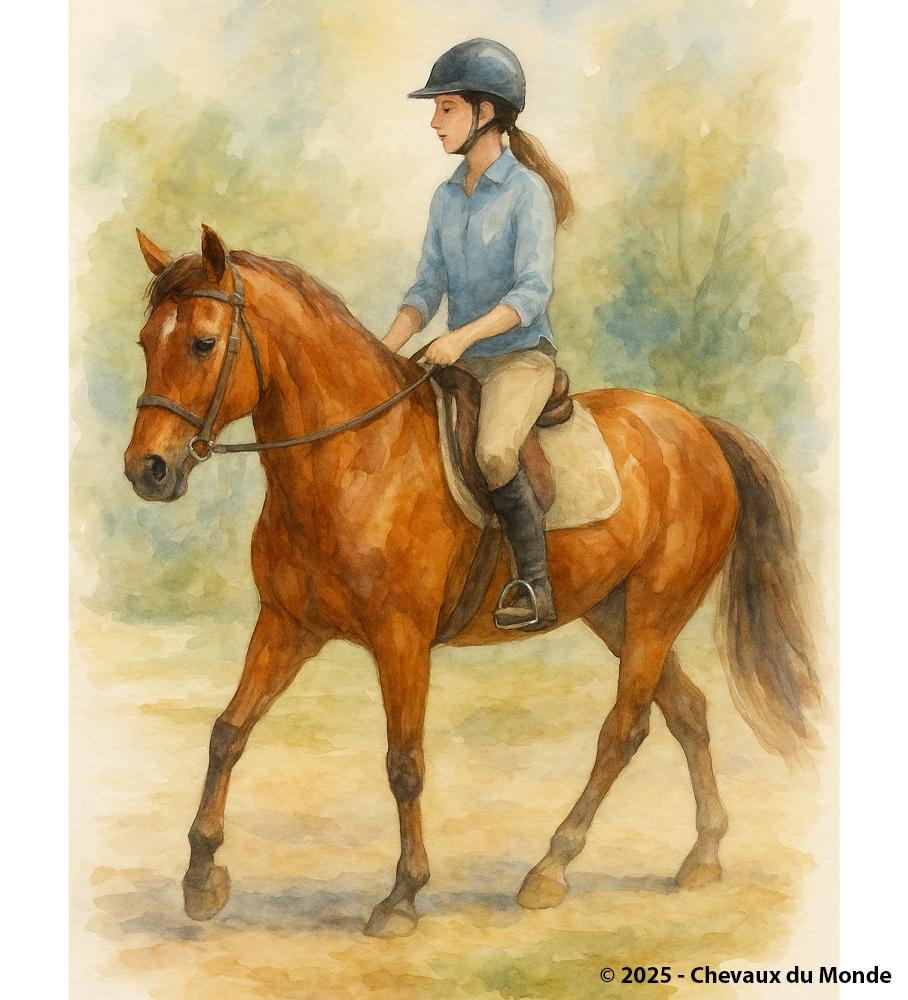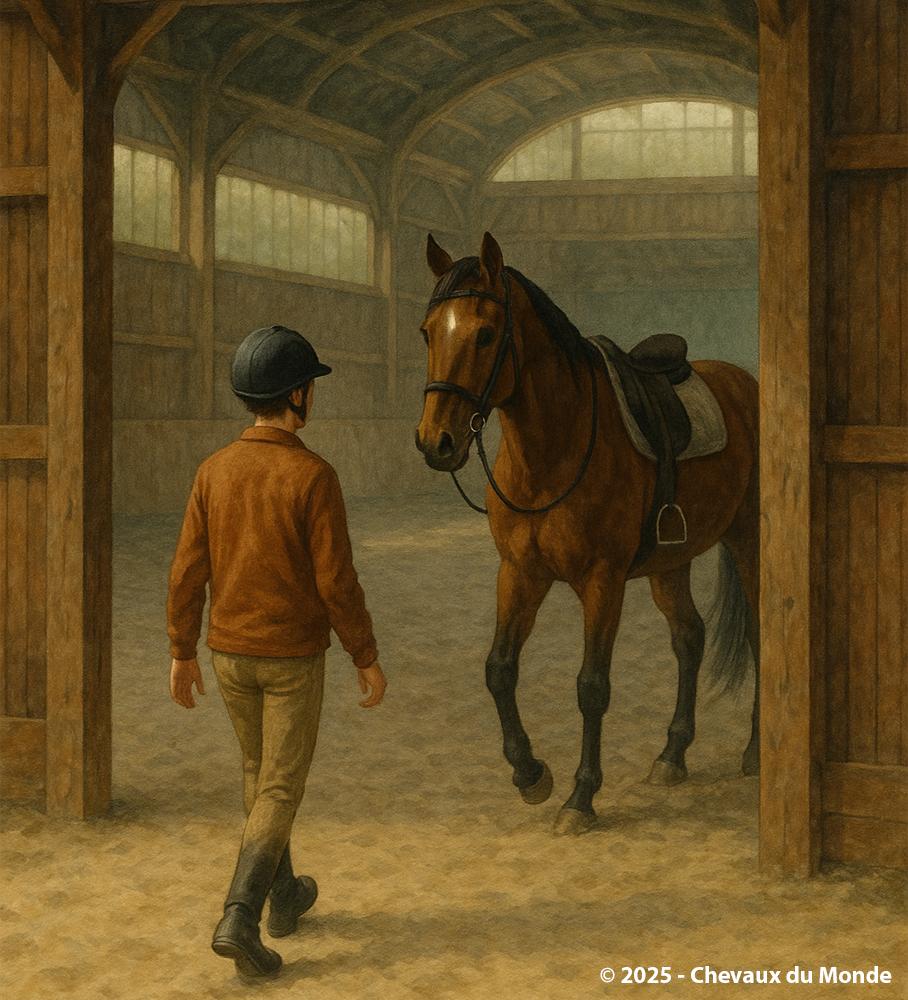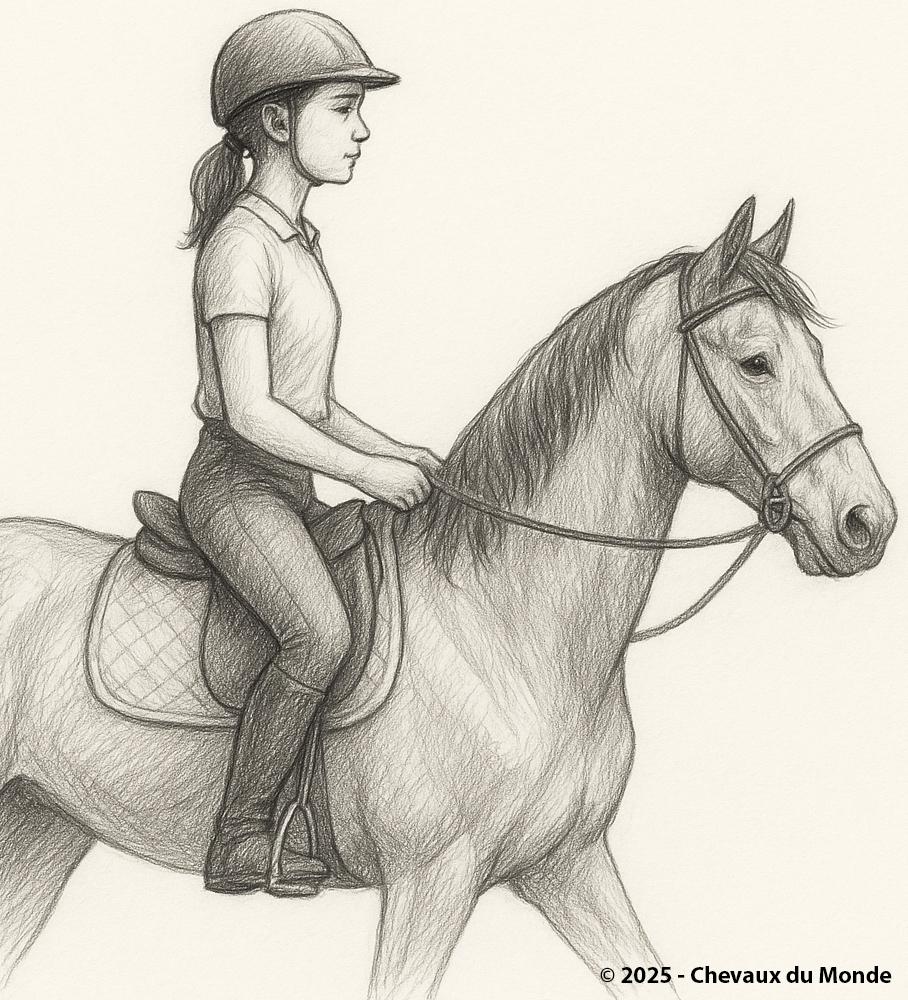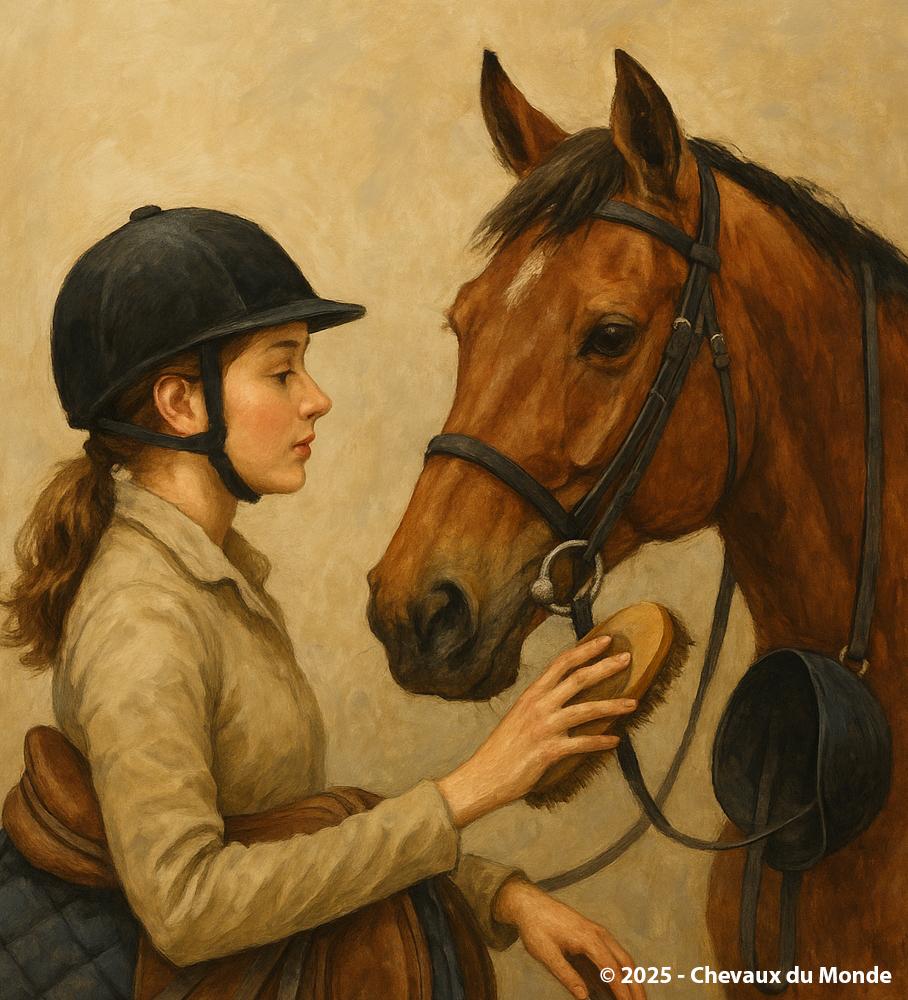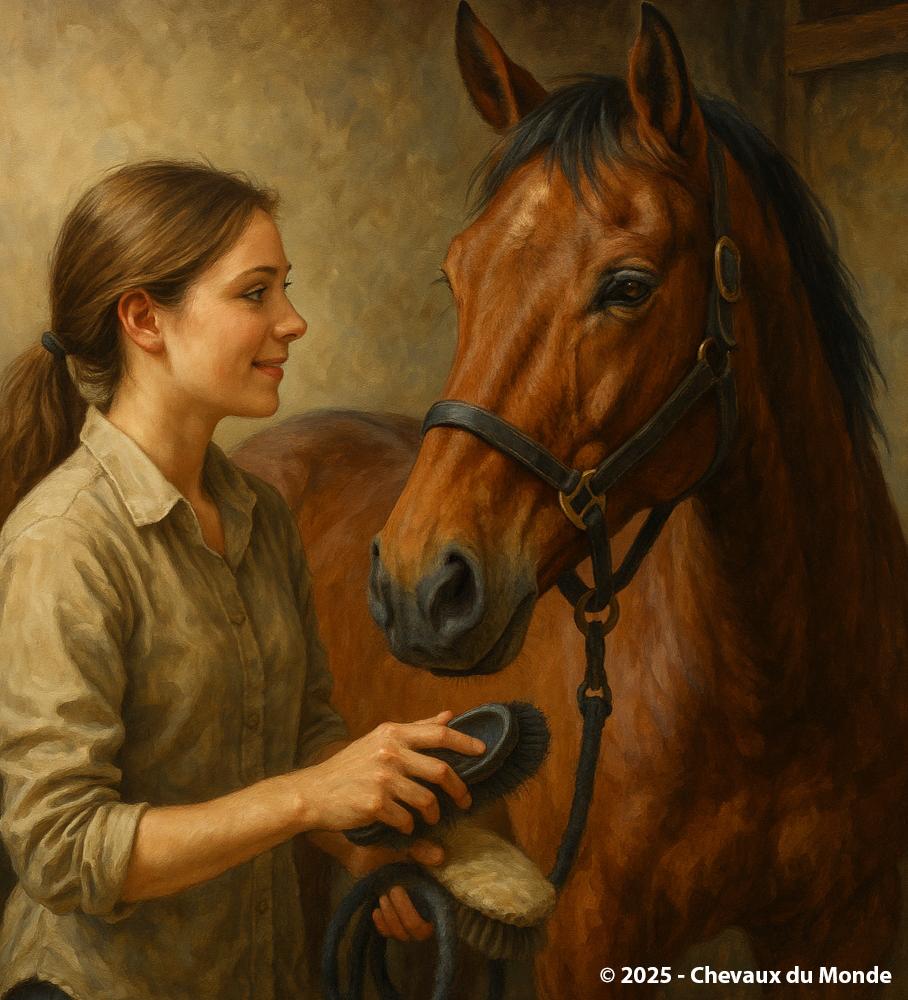HORSE RIDING FOR BEGINNERS: COMMON MISTAKES TO AVOID
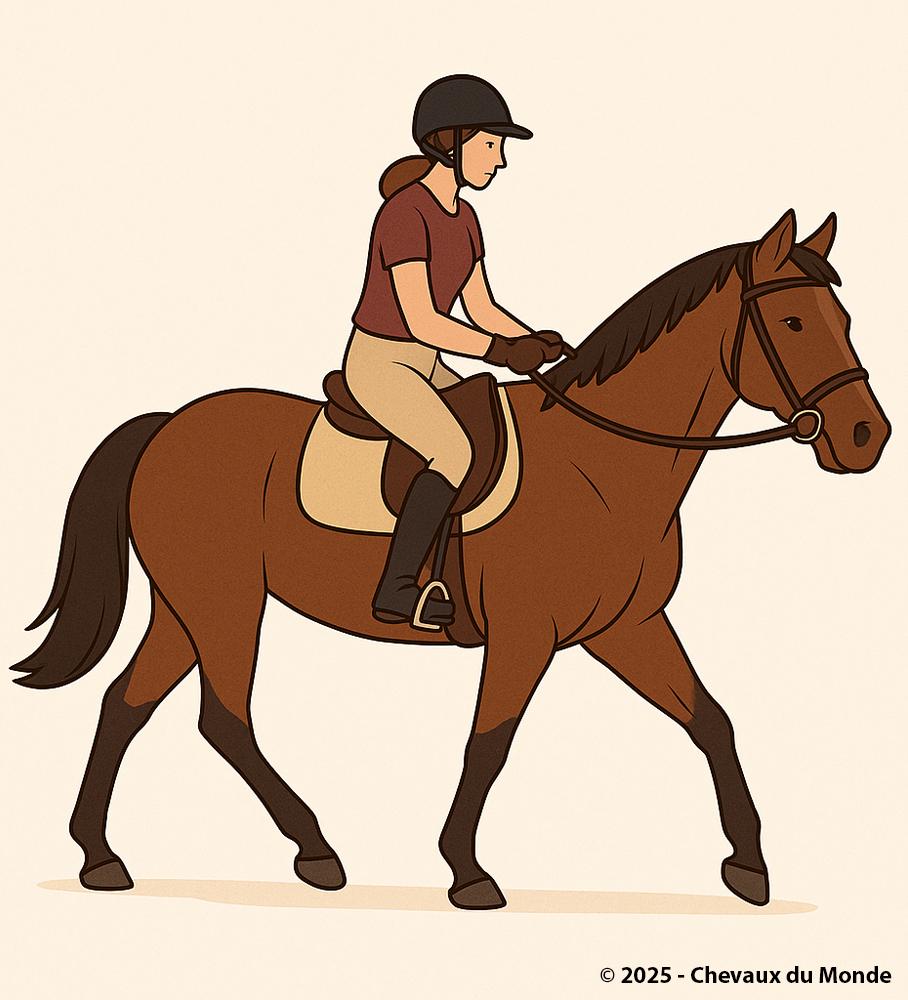
Hands, legs, posture... beginner mistakes are common, but proper riding position comes with practice and good guidance.
arning to ride a horse is an exciting adventure, but the first steps at the stable can also lead to mistakes. These missteps, often made by beginner riders, can slow progress, hinder the relationship with the horse, or even create dangerous situations. Here is an overview of the most common mistakes and tips to avoid them.
I. Before Getting on the Horse
1. Neglecting Horse Preparation
- Common mistake: brushing too quickly or forgetting key areas (belly, legs, girth area).
- Why it’s a problem: dirt left under the saddle or girth can cause wounds and discomfort to the horse.
- Tip: always check the contact areas (withers, back, belly, legs) and take time for a complete grooming.
2. Incorrectly Adjusting Tack
- Common mistake: tightening the girth too little, too much, or placing the saddle too far forward.
- Why it’s a problem: poorly fitted equipment can injure the horse and unbalance the rider.
- Tip: ask your instructor to check the tack the first time and learn to properly adjust the girth and bridle.
II. Mistakes While Riding
1. Rider’s Position
a) Sitting Stiff or Leaning
- Common mistake: tensing up, leaning forward, or slouching backward.
- Consequence: loss of balance, contradictory signals to the horse.
- Tip: keep an upright but relaxed posture, shoulders loose, eyes looking forward.
b) Incorrect Leg Position
- Common mistake: legs too far forward or heels raised.
- Consequence: instability and ineffective aids.
- Tip: keep heels down, legs relaxed, without gripping excessively.
2. Rein Management
- Common mistake: pulling too hard or holding the reins too long.
- Why it’s a problem: pulling causes pain and stiffness, while overly long reins reduce control.
- Tip: maintain a light, consistent contact, like a soft conversation with the horse’s mouth.
3. Looking and Anticipation
- Common mistake: staring at the horse’s ears or looking down.
- Consequence: loss of trajectory, delayed reactions.
- Tip: always look where you want to go, just like when cycling or driving.
III. Attitude and Relationship with the Horse
1. Impatience
- Common mistake: wanting to progress too fast (galloping before mastering the trot).
- Consequence: loss of confidence, higher risk of falling, sloppy learning.
- Tip: respect each step, as every gait requires practice and mastery.
2. Anthropomorphism
- Common mistake: attributing human intentions to the horse (“he’s lazy,” “he’s angry at me”).
- Consequence: misinterpretation of behavior.
- Tip: understand that horses react based on instinct, comfort, and training.
3. Fear or Nervousness
- Common mistake: showing apprehension or making sudden movements.
- Consequence: the horse, being highly sensitive, picks up and amplifies these emotions.
- Tip: breathe deeply, stay calm, and trust your instructor.
IV. Mistakes After the Session
1. Getting Off Too Quickly
- Common mistake: dismounting hastily or clumsily.
- Tip: learn to dismount properly, smoothly, without bumping the horse’s back.
2. Forgetting Aftercare
- Common mistake: not loosening the girth, not hosing the legs, or forgetting to reward the horse.
- Consequence: discomfort, muscle tension, weakened positive bond.
- Tip: always allow a walk at the end, loosen tack gently, brush, check legs, and give a suitable reward.
Conclusion
Horse riding requires patience, discipline, and great attentiveness to the horse. Beginner mistakes are normal, but knowing them in advance helps you progress faster and more safely.
“Riding a horse means learning to communicate with a sensitive partner, not to constrain them.”

